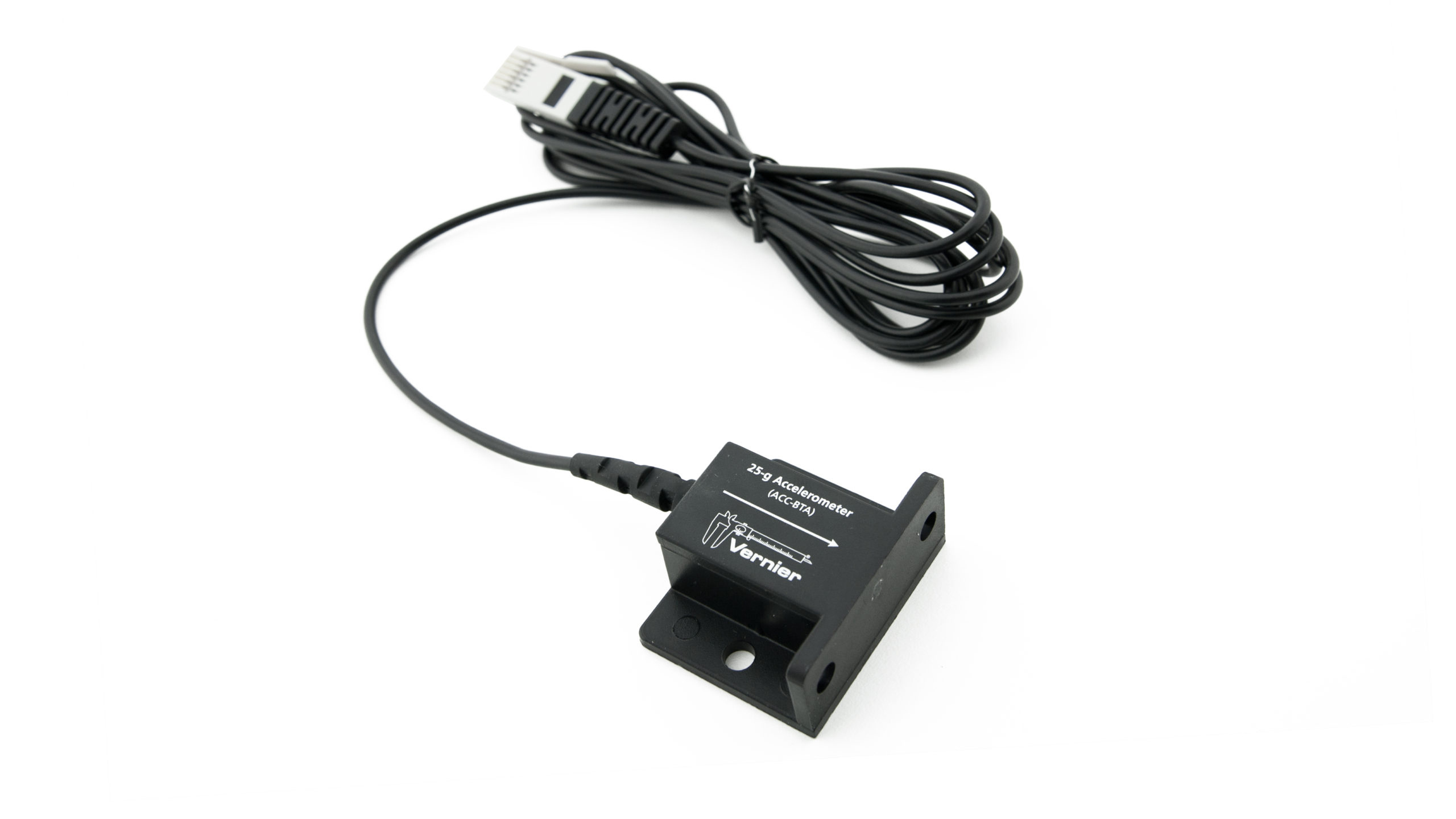Troubleshooting
- Primary Test: Make sure that the line marked by the arrow on the label of the sensor is positioned properly to measure the desired acceleration.
- Secondary Test: Position the sensor to read gravity effect and confirm that the reading is sufficiently precise.
Additional Troubleshooting
- What is the difference between your accelerometers?
- Can I use an accelerometer to measure velocity or position?
- What does an accelerometer actually measure?
Specifications
- Power: 30 mA @ 5VDC
- Range: +/-245 m/s² (+/-25g)
- Accuracy: +/-2.45 m/s² (+/- 0.25g)
- Frequency Response: 0 to 100 Hz
Calibration
Calibrate? No. The sensor is set to the stored calibration before shipping. For some experiments, you may use the stored calibration and zero the sensor before collecting data.
If you wish to calibrate the sensor for acceleration in the horizontal direction, you will conduct a two-point calibration.
- First point
⚬ position the sensor with the arrow pointing down
⚬ define this reading as -9.8 m/s² or -1 g. - Second point
⚬ rotate the sensor so that the arrow points up
⚬ define this reading as +9.8 m/s² or +1 g.
If you wish to calibrate the sensor for acceleration in the vertical direction, first decide which direction (up or down) will be the positive direction. Our recommendation is to consider up as positive and conduct the experiment with the vertical direction arrow pointing vertically upward.
- First point
⚬ position the sensor with the arrow pointing upward
⚬ define this reading as 0 m/s² or 0 g - Second point
⚬ rotate the sensor so that the arrow points downward
⚬ define this reading as -19.6 m/s² or -2 g
Related Products
- Low-g Accelerometer (LGA-BTA)
- 3-Axis Accelerometer (3D-BTA)
- Go Direct® Acceleration Sensor (GDX-ACC)
- Go Direct® Force and Acceleration Sensor (GDX-FOR)
- Go Direct® Sensor Cart (GDX-CART-G)
- Go Direct® Sensor Cart (GDX-CART-Y)

